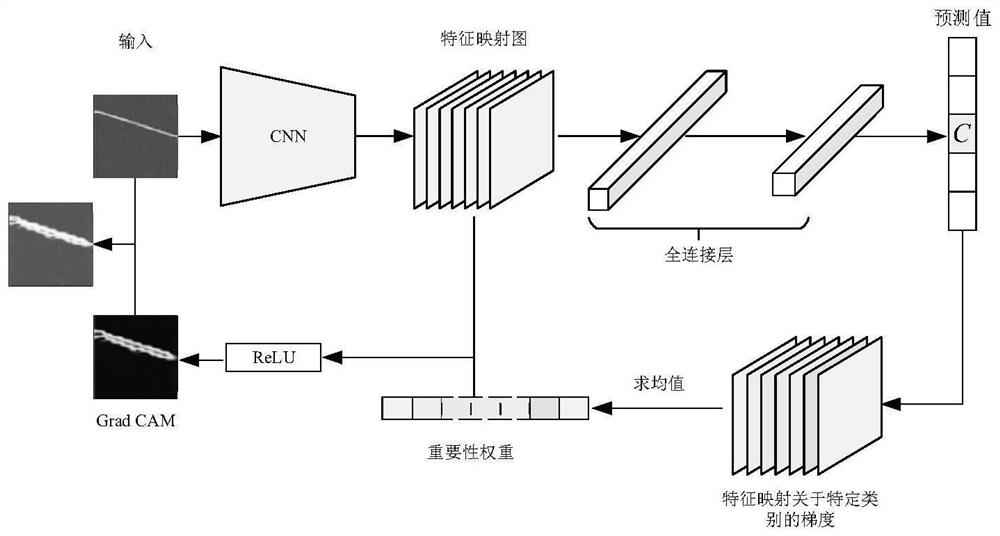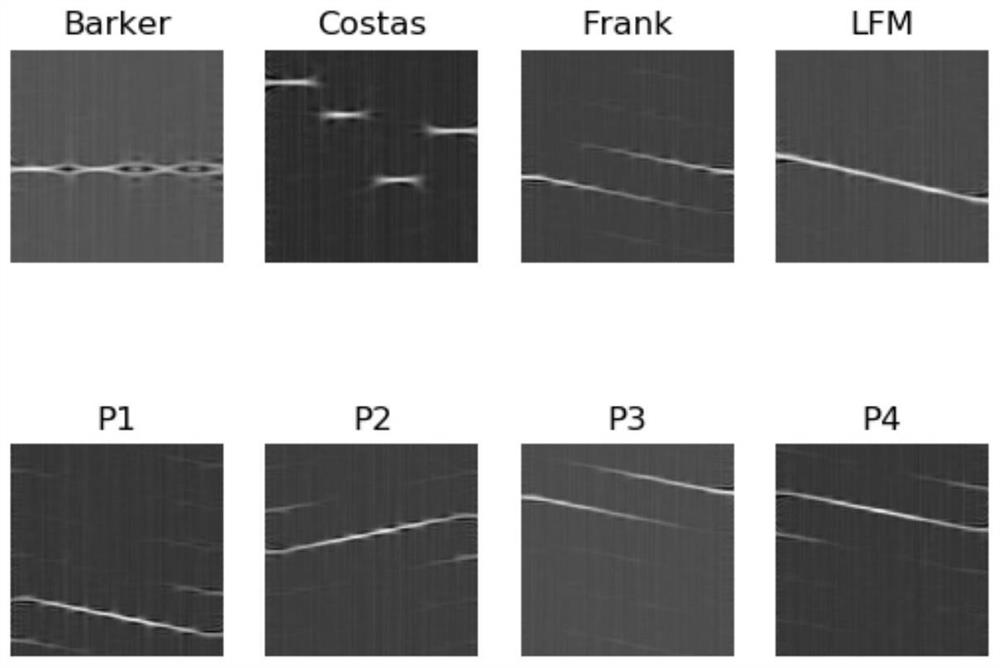Radar signal identification and positioning method based on MobileNet model transfer learning
A radar signal, transfer learning technology, applied in radio wave measurement systems, instruments, etc., can solve the problems of lack of interpretability, inability to intuitively analyze the working principle, lack of trust in deep learning models and intelligent systems, etc., to improve explainability. properties and transparency, improving convergence speed and generalization performance, and improving computational efficiency
- Summary
- Abstract
- Description
- Claims
- Application Information
AI Technical Summary
Problems solved by technology
Method used
Image
Examples
Embodiment 1
[0089] refer to figure 1 , is a flow chart of the radar signal modulation identification and localization algorithm system based on the MobileNet transfer learning model and gradient-weighted class activation mapping.
[0090] Step 1: Refer to figure 2 , the radar signal is converted into a two-dimensional time-frequency image through time-frequency analysis through Choi-Williams time-frequency distribution, and a training set and a test set are generated. The debugging methods of radar signals include: linear frequency modulation (LFM), BPSK, Frank code, Costas code, P1 code, P2 code, P3 code, P4 code signal;
[0091] Step 2: Refer to image 3 , build a depthwise separable convolution module by using spatial convolution and channel convolution;
[0092]Step 2-1: Depthwise separable convolution consists of two layers: depthwise convolution and channel convolution. Use depthwise convolution to apply a single convolution on each input channel (input depth). Then, channel c...
PUM
 Login to View More
Login to View More Abstract
Description
Claims
Application Information
 Login to View More
Login to View More - R&D
- Intellectual Property
- Life Sciences
- Materials
- Tech Scout
- Unparalleled Data Quality
- Higher Quality Content
- 60% Fewer Hallucinations
Browse by: Latest US Patents, China's latest patents, Technical Efficacy Thesaurus, Application Domain, Technology Topic, Popular Technical Reports.
© 2025 PatSnap. All rights reserved.Legal|Privacy policy|Modern Slavery Act Transparency Statement|Sitemap|About US| Contact US: help@patsnap.com



